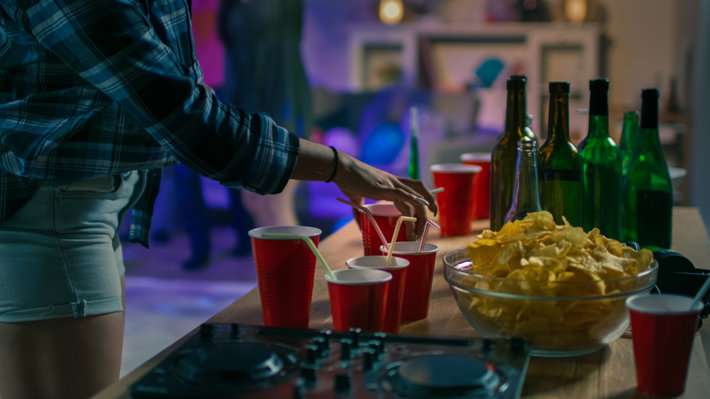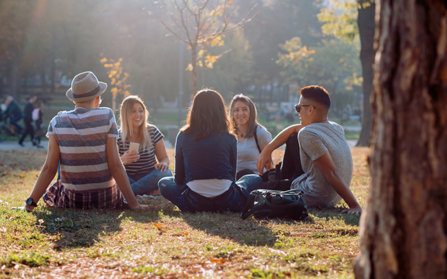Why Has Binge Drinking in College Been Normalized?

For whatever reason, binge drinking has become a normalized occurrence across college campuses throughout the United States. Various reasons contribute to why this behavior becomes common during this time of life. The combination of newfound independence, coming of age, and easier access to alcohol creates a perfect storm for binge drinking. Overindulging in alcohol in college has become so socially acceptable that it is almost seen as a right of passage into adulthood.
The problem with normalizing binge drinking is that it doesn’t address the genuine dangers of overdrinking. Many people think that the worst thing that can happen from a night of too much alcohol is a terrible hangover the next day. The consequences of overdrinking can be disastrous and deadly and young adults need to be more informed about the potential consequences of drinking too much alcohol.
What is binge drinking?
Binge drinking is defined by the Centers for Disease Control and Prevention (CDC) as having five or more drinks for men or four or more drinks for women in the course of two hours. Binge drinking is the most common form of excessive alcohol use. It is estimated that one in six adults will bring drink an average of four times per month. Binge drinking is most common amongst younger adults (ages 18–34); however, many older adults binge drink as well. It has been found that most people under the age of 21 that drink will binge drink.
Ways that binge drinking has been normalized.
Movies, television, and music.
One of the most significant issues surrounding binge drinking is how it has been normalized. There have been countless movies made about drunken adventures that make it seem like a lot of fun. Sure these movies may be funny and make people laugh, but they also send the message to young adults that drinking too much is an entirely acceptable form of behavior with minimal consequences. Unfortunately, the realities of binge drinking are not often portrayed on these types of shows or in the music that makes it sound fun.
Drinking culture.
The United States has a rather prevalent drinking culture. Alcohol can be found at most events, beer gardens at county fairs are considered normal, alcohol billboards and TV commercials are a part of everyday life. Children begin receiving the message from an early age that alcohol is safe and fun. These companies usually put “drink responsibly” in fine print, but that is more out of obligation than genuine concern. How often are we shown what it means to drink responsibly compared to just drinking in the media?
College party scenes.

The college party scene has become an American staple. When most people think of college, one of the first things they think of is the parties. Drinking alcohol in college has become wholly normalized to the point that if a person doesn’t drink, they are either made fun of, or questioned as to why. With the amounts of alcohol poisoning that have occurred at frat parties, many colleges have started to step up to combat this narrative but only to a certain degree. The fact remains the same that binge drinking and college seem to go hand in hand, and it won’t be until a conscious decision is made that things will begin to change.
Risks of Binge Drinking.
Binge drinking is linked to a variety of health problems and can lead to numerous unintended consequences. These consequences have the potential to affect not only the person who is drinking but also other people around them. Some of the common risks associated with binge drinking include but are not limited to:
- Unintentional death or injuries.
- Consequences from unintended sexual relations.
- Memory or learning problems.
- Becoming a victim of violence.
- Alcohol addiction.
- Fetal alcohol spectrum disorders.
- Sudden infant death syndrome.
- Unintended pregnancy or pregnancy complications such as miscarriage and stillbirth.
- Cancer or the mouth, esophagus, breast, liver, or colon.
- Sexually transmitted diseases.
- Driving Under the Influence charges.
- Hurting or killing someone while driving under the influence.
- Incarceration due to disorderly conduct.
What can we do to help?
Creating practical alcohol education for schools.
While there is an emphasis placed on drug education in schools, not as much education surrounding the issue of alcohol is given. Many children grow up thinking that alcohol is not a drug or isn’t something to worry about. Kids often see their parents drink, see it on television, and see it in restaurants. Overexposure to alcohol can create a false sense of security. Children must learn about the consequences of binge drinking and the ways that alcohol can affect their health.
A shift in cultural ideologies.
To really create an impact on the amount of binge drinking that occurs in college, a cultural shift is needed surrounding the attitudes of drinking. The longer we continue to normalize problematic drinking behaviors, the longer they will continue to occur.

Cutting back on the stereotypical college party scene.
Another way to combat binge drinking in college is to de-normalize the college party scene. If drinking at college parties was no longer a regular occurrence, there would be fewer problems due to college binge drinking overall. College campuses could help cut back on these problems by establishing rules and consequences related to binge drinking.
Creating more alcohol-free events.
Alcohol does not need to be a part of every significant event. For example, it is okay not to have alcohol served at sporting events or community events. Likewise, while many people can drink in moderation, that doesn’t mean that alcohol always needs to be available.
Shifting focus onto health and wellness.
One of the best things we can do to combat the effects of binge drinking is to place more emphasis on health and wellness. Alcohol is a drug that has a negative impact on a person’s physical, mental, and emotional well-being. Even drinking in moderation can create health problems for people later down the road. If we began to treat alcohol as the toxic carcinogen that it really is, then fewer people would be inclined to drink it. We can see the effectiveness of the public health initiatives that were placed on big tobacco. Some people still smoke, but the numbers have been drastically reduced.
Signs a person needs treatment:
- The person has begun to build a tolerance to alcohol and needs to consume more each time to achieve the same desired effect.
- The person experiences cravings or withdrawal symptoms when they stop drinking.
- The person has tried to stop drinking for a period of time and was unable to do so or finds the idea of staying sober to be extremely difficult.
- The person begins to lose interest in hobbies and other activities.
- The person begins to question that they may have a problem.
If you or someone you love is experiencing any of the above symptoms, it may be time to consider seeking professional help. There is no shame in admitting to a drinking problem, and this is a condition that many people can overcome on a daily basis when they have the right tools to do so.
Sources:
https://www.cdc.gov/alcohol/fact-sheets/binge-drinking.htm


 ®
®